Module 13: Small and Medium Enterprises in ASEAN
Table of Contents
Reading Text & Presentation
13.1 Small and medium enterprises (SMEs)
The growing trend of economic cooperation results in competition across all regions. New areas of integration enhance free and liberated trade. As countries have become interdependent, the opportunities for international trade increase and changes effect doing business in the ASEAN community.
13.1.1 Definition of SMEs
The definition of SME varies according to the character of the ASEAN country and there is a diverse range of company sizes, capabilities and business activities.
The following table describes the different definitions of SMEs in Southeast Asia:
| Country | Explanation |
Kingdom of Cambodia |
Small enterprises employ from 11 to 50 employees and fixed assets of $50,000 to $250,000. Medium enterprises employ more and have assets of $250,000 to $500,000. |
Republic of Indonesia |
SMEs employ fewer than 100 employees. |
Lao People’s Democratic Republic |
Small enterprises employ fewer than 19 employees with fixed total assets of 150 million kep, and medium enterprises employ fewer than 99 employees and an annual turnover not exceeding 1 billion kep. |
Malaysia |
SMEs vary in each business sector based on the number of employees and annual sales turnover. |
Republic of the Philippines |
SMEs employ fewer than 200 employees, and have less than 40 million pesos in assets.
|
Kingdom of Thailand |
SMEs vary in each business sector based on the number of employees and fixed capital. |
Socialist Republic of Vietnam |
SME refers to independent productions and businesses with registered capital, according to the law provisions, not exceeding one billion VND or annual labor not exceeding 300 employees. |
(Source: SME development frame work of 2005)
Regional cooperation in ASEAN is guided by the ASEAN Strategic Action Plan for SME Development 2010-2015. This action plan is regulated by the ASEAN Economic Administers (AMEs) to develop competitiveness of SMEs towards a single market production base in ASEAN.
The Framework Agreement on the ASEAN Investment Area was signed on 8 October 1998 to increase the flow of foreign direct investment from both ASEAN and non-ASEAN countries. This agreement binds the members to progressively reduce and eliminate investment regulations and implement a free flow of skilled labor and technology.
Under the first pillar, ASEAN aims for transparency of their respective investment rules by establishing a database for ASEAN supporting industries and technology suppliers to identify technical cooperation. Investment liberalization supports national treatment. Under article 16, the main institutional arrangement is the ASEAN Investment Area (AIA) Council, in which the ministers are responsible for investment. The secretary general of ASEAN coordinates the committee on investment.
Trade and investment in specific areas help to build competitive advantage as follows:
| Country | Specialization |
| 1. Republic of Indonesia |
wood-based products and auto motives |
| 2. Malaysia |
rubber-based products, textiles and apparel |
| 3. Republic of the Union of Myanmar |
agro-based products and fisheries |
| 4. Republic of the Philippines |
electronics |
| 5. Republic of Singapore |
e-ASEAN and healthcare |
| 6. Kingdom of Thailand |
air travel and tourism |
The South East Asian region is one of the fastest growing regions in the world, which is beginning to gain its stride on a global scale. The national trade group increases to coordinate economic growth both regionally and internationally. The ASEAN commitment is to initiate the region’s capacity, for example, attract investment, upgrade the standards and quality of its products, and upgrade the service products of small and medium enterprises (SMEs). The SMEs benefit from this dynamic ASEAN market. It is important to recognize the structures and factors unknown to many individuals. More knowledge about the country’s business can lead professionals to create a pool of personal skills and motivation.
13.1.2 Focusing on SMEs in ASEAN
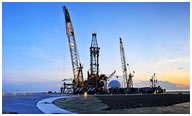 Brunei Darussalam
Brunei Darussalam
Although Brunei Darussalam is the smallest county in the South East Asian region, it has one of the highest gross domestic products (GDPs). It relies heavily on oil and gas exports. With the exception of a few products, including coffee, tea, tobacco, and alcohol, tariffs on agricultural products are zero operating under World Trade Organization (WTO). There are specific projects of development: the world-class shipping port in Muara, and expansion of Brunei international airport. The commitment is to boost its small and medium enterprises to balance in sub-regional levels, particularly under the Brunei-Indonesia-Malaysia-Philippines-East ASEAN Growth AREA (BIMP-EAGA).
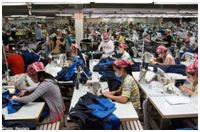 Kingdom of Cambodia
Kingdom of Cambodia
Cambodia continuously grows relying on its garment industry, tourism services and construction. It operates a single window under the free flow of goods measure for the CLMV’s special provision (Cambodia, Loa PDR, Myanmar, and Vietnam). The private sector is the major growth development generally characterized by small-scale and family-based enterprises. However, the informal business nature constrains its banking and investments for lending and co-investment among ASEAN countries. In addition, the infrastructure and transportation are still undeveloped especially in rural areas.
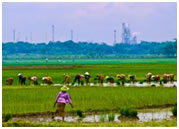 Republic of Indonesia
Republic of Indonesia
The development of small and medium enterprises is a major part of economic development among agricultural, mining, manufacturing, electrical/ gas/ water, construction, trade, hotel/food and beverages, transportation and communication, and financial industries. The majority are just micro enterprises. The agricultural industry is the major part of the economic development followed by manufacturing. Indonesia has joined World Trade Organization (WTO) and ASEAN Free Trade Area (AFTA).
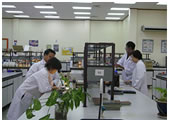 Malaysia
Malaysia
The laws and regulations under the Small and Medium Industries Development Corporation Act include long-term and short-term plans, for example, the 15th year Third Industrial Master R&D outsourcing providers, linkage among SMEs, government linked companies (GLCs), multinational companies (MNCs), and knowledge-based SMEs. A one-stop service is provided for information and advice on application and promotion for SMEs. There are 6 government-owned development financial banks for SMEs financial assistance namely SME bank, EXIM Bank, Bank Simpanan Nasional, Bank Kerjasama Rakyat Malaysia Berhad, Bank Pembangunan Malaysia Berhadand Bank Pertanian Malaysia. Malaysia promotes free flow of foreign direct investment in the manufacturing sector. The competition policy is to eliminate monopolistic conduct. Malaysia attracts foreign human capital.
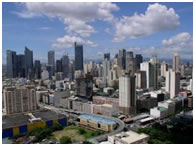 Republic of the Philippines
Republic of the Philippines
The Philippines has large foreign market domination. SMEs are the biggest employer in the country. Structural problems hinder its gains, such as low investment infrastructure, high transaction costs, coherent industrial policy and political credibility.
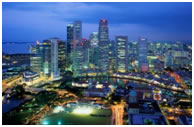 Republic of Singapore
Republic of Singapore
The government supports SME development with strong private sector fund management to expand stages in many industries. One recent example is the Sirius Growth Partner I launches in the city state. The first critical state of setting up SMEs is market entry of starting up and running in compliance with law and regulations. There are two typical factors to setting up: time and the cost of doing business.
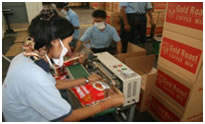 Republic of the Union of Myanmar
Republic of the Union of Myanmar
SMEs predominate 95% of the overall economy and 92% of the manufacturing sector. The opening of the economy offered augmented opportunities for taking advantage of working in major resource sectors and as part of cross-border supply chains and value chains. A variety of state-level organizations exist to support SMEs, SMART Myanmar is one of the most significant that promotes and sustainable production of garments to increase SMEs by building capacity and increasing skills and knowledge in local partner organizations, to facilitate development of marketing and exporting strategies.
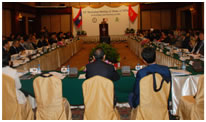 Lao People’s Democratic Republic
Lao People’s Democratic Republic
SMEs have limited access to capital, government and NGO funds, and sources of information. Resources are simply exported in their basic forms and the value to be obtained by processing the resources is captured by international interests. The government has made efforts to try to overcome these problems, working though institutions such as SMEPDO. The attempt is to improve products by adding value, and creating brands and technical skill in the public and private sectors, for example, in the case of food certificates issued by the ministries of agriculture and health.
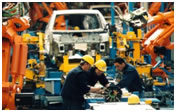 Kingdom of Thailand
Kingdom of Thailand
The Thai government has promoted the SME sector after the calamitous financial crash of 1997.
Fostering and strengthening the supporting industries in response to the need to correct and improve the country’s trade balance by increasing domestic value.
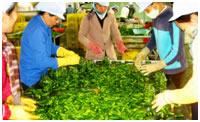 Socialist Republic of Vietnam
Socialist Republic of Vietnam
Vietnam has limited ability to access capital, as well as a lack of working capital. Vietnam also has a high level of reliance on imported goods, which are used as constituent parts of goods for subsequent export. SMEs have had a long-standing presence in the economy in such areas as agro-industrial foods and processed goods, fisheries, and processed seafood items, or in export-based sectors relying on diffused technology and low labor costs (such as electronics and wooden furniture). Vietnam has also built casinos based in border regions.
To conclude, in order to develop the English language skills of SME Owners, the standards for SME Owners from the English language development center (ELDC) commission on higher education at the Ministry of Education has been recommended to use as the standards of English as attached in the resources.






